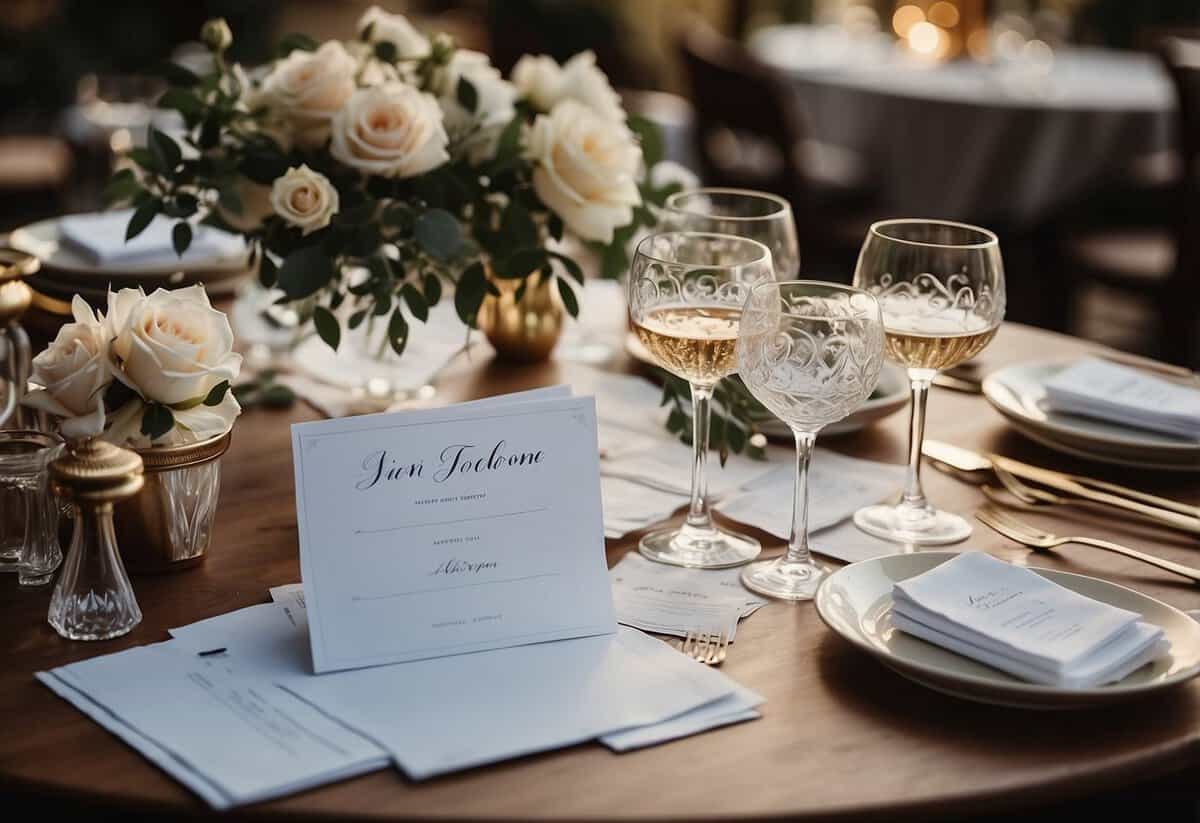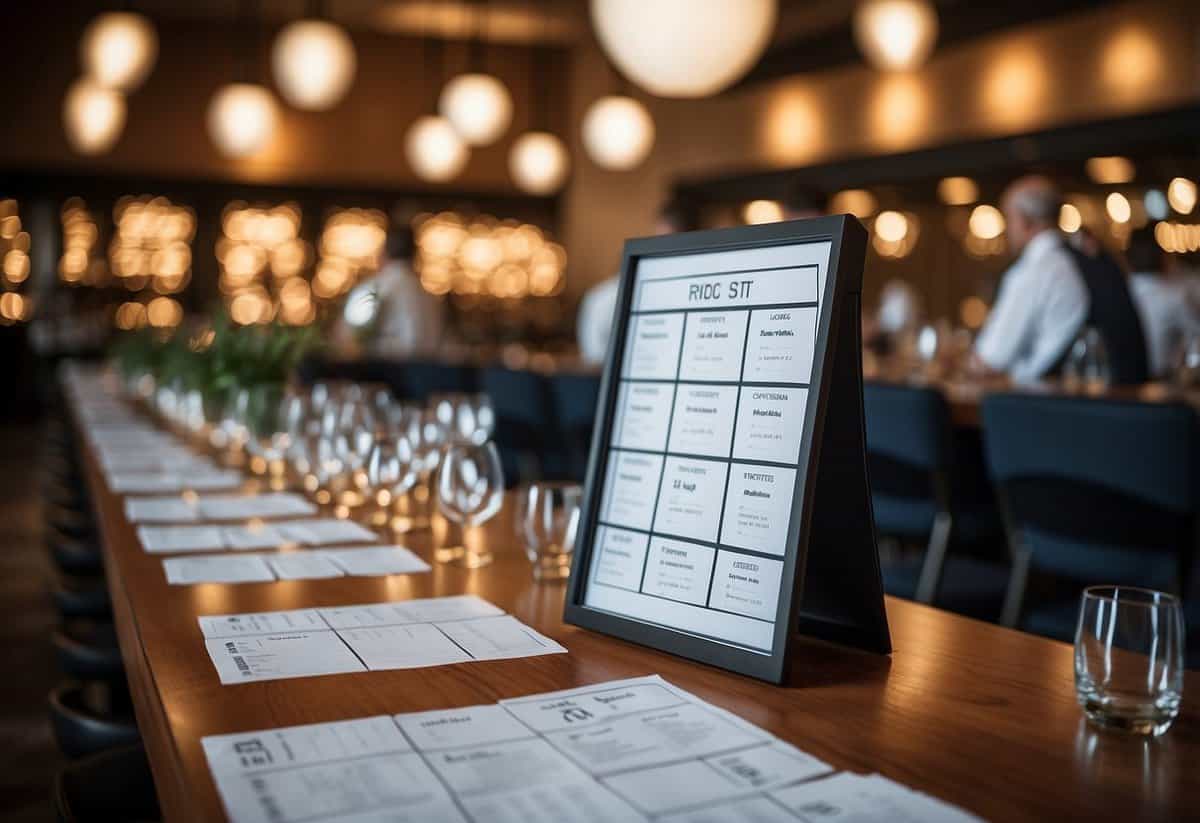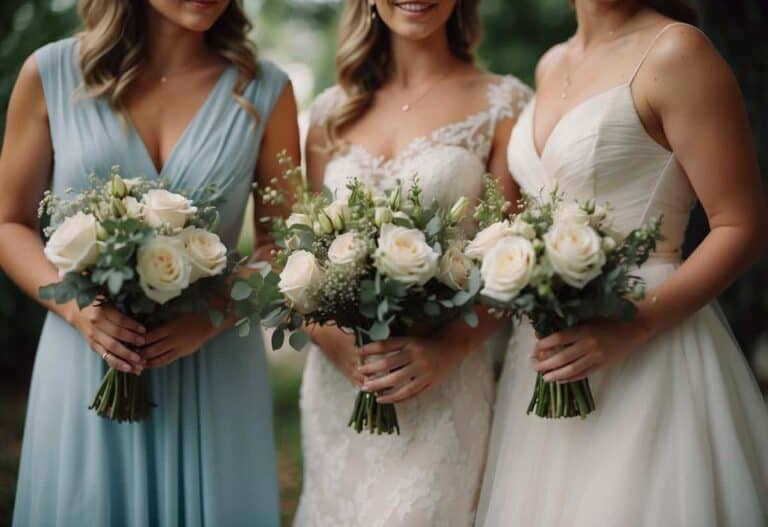Wedding Organization Tips: Stress-Free Planning for Your Big Day
Planning a wedding is an exciting journey, but it can also be quite overwhelming with the number of details involved. From choosing the perfect venue to selecting your dream gown, every decision matters. The key to a stress-free wedding is staying organized and keeping track of all your tasks and deadlines.

You want your special day to be memorable and flawless, and good organization can help make that happen. With a few practical tips and a solid plan, you can turn your dream wedding into a reality without feeling frazzled.
1) Create a Wedding Timeline

Start by deciding on the time of your ceremony. This will be the anchor point for the rest of your day. Write down all the key events you want to include, like getting ready, photos, and the reception.
Plan each part of your day in blocks of time. For example, getting ready might take two hours, and photos might take one hour. Make sure to include travel time if your venues are far apart.
Don’t forget small details. When will you eat breakfast? When will you take a break? These moments are important too. Share your timeline with everyone involved so they know what to expect.
Be flexible. Weddings can be unpredictable, so cushion your schedule with extra time for each event. This will help manage any delays and keep things running smoothly.
2) Set up a wedding website

Creating a wedding website is a great way to keep your guests informed. Start by choosing a platform like The Knot or Zola. These options offer user-friendly templates and lots of customization.
Share important details like the date, venue, and dress code. Don’t forget to include directions and accommodation options for out-of-town guests.
Make your website personal by adding your love story and photos. Introduce your wedding party members and share fun facts about them.
Include your wedding registry links and an RSVP section. This will make it easy for guests to confirm their attendance and choose gifts.
3) Create a detailed budget

Start by figuring out your total budget. Look at your savings, any contributions from family, and if you plan to start a wedding fund.
Next, allocate your budget to different categories. Popular categories include venue, attire, catering, and photography. For example, couples typically spend about 7% of their budget on wedding attire.
Don’t forget smaller expenses like accessories, invitations, and decorations. These can add up quickly if not accounted for.
A detailed budget helps you keep track of spending and makes sure you stay within your limits. Enjoy the process and make sure to prioritize what matters most to you!
4) Hire a Trustworthy Coordinator

A reliable wedding coordinator can make all the difference. They handle the details, so you don’t have to worry.
Look for someone experienced and highly recommended. Check their reviews and talk to past clients.
Communication is key. Make sure your coordinator listens to your needs and understands your vision.
A good coordinator manages the timeline, vendors, and any last-minute issues. This ensures your day runs smoothly.
Trust in your coordinator’s expertise will let you relax and enjoy your special day more fully.
5) Book Top-Rated Vendors Early

Booking top-rated vendors early is crucial for a smooth wedding planning process. Popular vendors like photographers, caterers, and venues often get booked months in advance. By securing them early, you ensure that experienced professionals will be part of your big day.
Early booking also gives you more time to discuss your vision with each vendor. This way, they can tailor their services to meet your needs. Whether it’s a DJ who understands your musical taste or a florist who can bring your floral dreams to life, early planning helps.
Read reviews and schedule interviews before making any decisions. This helps you find vendors with the highest ratings and best reputations. Remember, booking early reduces stress and gives you more freedom to enjoy the creative aspects of wedding planning, like choosing your cake flavor or designing your dance playlist.
6) Plan a guest list carefully

Your guest list sets the stage for your wedding. Start by brainstorming with your partner and jotting down names of people you’d like to invite.
Create a master list and organize it using a spreadsheet. This will help manage details like addresses and RSVPs.
Decide early about plus-ones. Set a clear policy to avoid confusion. This ensures you don’t exceed your venue’s capacity.
Keep your spreadsheet updated. Reach out weekly for RSVPs and track responses promptly. This helps in finalizing your headcount and seating arrangements.
Be mindful of your budget. Each additional guest adds to the cost, so invite people who are most important to you.
Remember to communicate clearly. Make your “RSVP by” date obvious to help guests respond on time. This keeps everything running smoothly.
7) Choose a Memorable Venue

Your wedding venue is the backdrop to your special day. It’s important to choose a place that fits your style and vision.
First, consider the number of guests you want to invite. Make sure the venue can comfortably hold everyone.
Think about the season and weather. If you want an outdoor wedding, have a backup plan in case of rain.
Check if the venue provides catering or if you need to find outside vendors. Sometimes in-house catering can simplify planning.
Visit a few venues to compare options. Seeing them in person gives a better idea of the space and atmosphere.
Lastly, keep your budget in mind. Look at all costs, including any extra fees.
8) Personalize your ceremony

Personalizing your ceremony makes it unique and memorable for everyone. There are many ways to add personal touches that reflect your story and tastes.
Include meaningful items in your décor. For example, you can place photos of loved ones on chairs or decorate with their favorite flowers.
Interactive activities can create a special bond with your guests. A ring-warming ceremony lets guests hold your rings and offer their wishes.
Customized elements like monogrammed bouquet ribbons add a personal touch to even the smallest details. Collect messages from loved ones and incorporate them into your ribbon designs.
9) Organize a seating chart

Organizing a seating chart can be a fun part of wedding planning. Start by getting a final guest count. This way, you’ll know how many tables and chairs you need.
Next, get a floor plan from your venue. Decide where the main elements like the DJ, food stations, and dance floor will go. Then, plan how to arrange the tables.
Consider grouping guests by their relationships. Try to seat friends together and family members near each other. Mix it up a bit to encourage guests to meet new people.
Use a mix of round and rectangular tables. Round tables encourage mingling, while rectangular ones can save space. You might also consider a fun design, like a wall of ivy with the seating chart written on kraft paper. Don’t forget to finish your chart early to give your planner enough time to create place cards and other details.
10) Select meaningful music

Music is one of the most memorable parts of your wedding. Choose songs that hold special meaning for you and your partner. These could be tracks from when you first met, your favorite songs, or tunes from significant moments in your relationship.
Think about the mood you want to set. For a joyful vibe, consider upbeat songs that make you and your guests want to dance. If you prefer a more intimate feel, slower, romantic songs might be better.
Consider the size and setting of your venue. A small, indoor space might suit a solo instrument like a violin or harp. For larger ceremonies, you could opt for a string quartet or a live band.
Don’t be afraid to include a mix of genres. Your music can range from classical to pop, as long as it reflects your tastes and personalities. This variety can make your wedding day unique and special.
Selecting the Perfect Venue

Choosing the right wedding venue is crucial as it sets the tone for your big day. You’ll want to consider whether an indoor or outdoor setting suits your theme and guest count.
Indoor vs. Outdoor Venues
When picking an indoor venue, think about elements like decor, lighting, and accessibility. Indoor venues often have controlled environments, making weather less of an issue.
Consider the style of the venue. Ballrooms, hotels, and banquet halls often provide a classic and elegant feel. If modern is more your style, you might look for venues like art galleries or museums.
For outdoor venues, parks, gardens, and beaches can provide beautiful natural backdrops. They’re perfect for spring and summer weddings.
Always have a backup plan for outdoor settings in case of bad weather. Ask about available indoor spaces or tents to ensure your day goes smoothly.
Capacity Considerations
Knowing how many guests you’re expecting will help narrow down your venue options. Estimate a guest count early to avoid issues later.
Different venues have maximum capacities, so you want to choose one that comfortably fits everyone. Too small a venue could lead to a cramped, uncomfortable event. Too large a venue might feel empty and lack intimacy.
Consider if the venue provides enough seating, tables, and space for dancing. Ensure there are accessible restrooms and facilities for all guests, including those with special needs.
Always ask the venue coordinator about specific rules and restrictions. Some venues might have noise limits or policies that could affect your arrangements. These details help ensure your venue fits your vision and logistic needs.
Planning Your Wedding Budget

Creating a wedding budget helps ensure you don’t overspend and stay stress-free. By carefully allocating funds and tracking expenses, you can celebrate your special day without breaking the bank.
Allocating Funds Efficiently
To start, make a detailed list of all your wedding essentials like venue, food, outfits, and photography. Prioritize these items based on what matters most to you. For example, if the dress is most important, allocate a larger portion of your budget to it.
Consider the number of guests. A larger guest list means more food, drinks, and seating costs. Trimming the guest list can significantly reduce these expenses.
Split the budget into percentages:
- Venue and Catering: 40%
- Attire: 7%
- Photography/Videography: 12%
- Entertainment: 10%
- Decorations: 10%
- Miscellaneous: 21%
Adjust these percentages based on personal preferences and needs.
Tracking Expenses
Separate your wedding fund from your regular accounts. Open a dedicated account for your wedding expenses to make tracking easier.
Use budgeting tools and apps to keep an eye on your spending. Many apps allow you to categorize expenses, helping you see where your money is going.
Keep all receipts and invoices in one place, either digitally or in a binder. This helps when you need to review spending or resolve discrepancies.
Regularly review your budget, comparing actual expenses to your planned amounts, and adjust as needed to stay on track.







